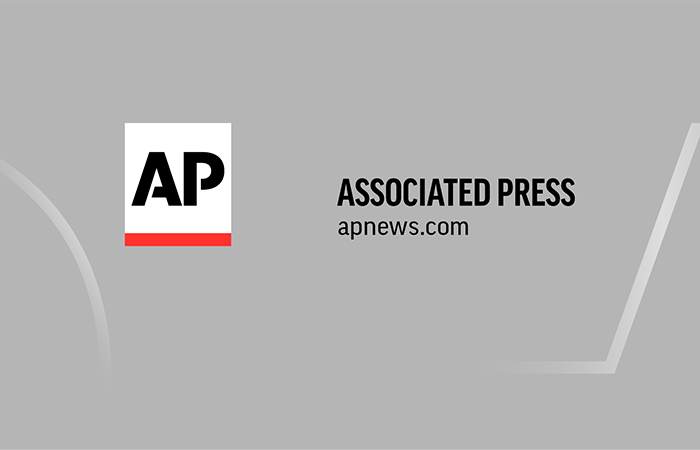The Tug of War: Trump’s Agenda Meets the Judiciary and Education Policy
March 13, 2025, 3:38 pm
In the ever-shifting landscape of American politics, the battle lines are drawn. On one side, the Trump administration, emboldened by a conservative Supreme Court and a desire to reshape the nation’s policies. On the other, a judiciary grappling with the implications of presidential power and an education system at risk of losing its guiding hand. The stakes are high, and the consequences could ripple through society for years to come.
The Supreme Court stands as a battleground. Trump’s influence looms large, thanks to three appointees who now hold the keys to pivotal decisions. The court’s conservative majority has shown a robust view of presidential power. Yet, even they may hesitate to endorse every aspect of Trump’s agenda. The push to end birthright citizenship is a prime example. This move would overturn over a century of legal precedent, challenging the very fabric of the 14th Amendment. It’s a bold gamble, one that could redefine citizenship in America.
More than 100 lawsuits have been filed against the administration’s initiatives. Lower courts have paused Trump’s plans over 30 times. The Supreme Court’s early decisions have focused more on procedural matters than the substance of the cases. This cautious approach suggests a desire to maintain judicial integrity while navigating a politically charged environment.
Trump’s allies, including billionaire Elon Musk, have unleashed a torrent of criticism against the judiciary. They threaten impeachment and launch personal attacks, painting judges as obstacles to progress. The Federal Judges Association has responded, warning against rhetoric that undermines public trust in the courts. The tension is palpable. Trump claims he will respect court rulings, yet his administration hints at defiance. This could ignite a constitutional crisis, a scenario that sends shivers down the spine of democracy.
The Supreme Court’s involvement is a slow burn. It signals a preference for established processes, but the urgency of the cases is undeniable. Legal scholars argue that the nation is already in a constitutional crisis, a sentiment echoed by many as Trump’s actions unfold. The court’s reluctance to tackle urgent constitutional questions raises eyebrows. Critics argue that district judges now feel emboldened to issue orders against the executive branch, creating a judicial landscape fraught with uncertainty.
Meanwhile, the Education Department faces its own existential crisis. Founded in 1980, its mission was clear: ensure equal access to education. But with Trump’s desire to dismantle the department, the future of educational equity hangs in the balance. New Education Secretary Linda McMahon has been tasked with this monumental challenge. If she succeeds in “working herself out of a job,” the implications could be dire.
Test scores reveal a troubling reality. One-third of eighth graders lack fundamental reading skills. The gap between high and low performers widens. Trump’s allies argue that dismantling the department will streamline funding, allowing states to prioritize their needs. But this raises a critical question: what happens to the billions allocated to public schools? Title I funding, crucial for schools in impoverished areas, could be at risk. Without federal oversight, states may divert funds away from those who need it most.
The potential shift to block grants could spell disaster for vulnerable students. States like Mississippi and South Dakota rely heavily on federal aid. A lack of guardrails could entrench existing inequalities, leaving disadvantaged students without the support they desperately need. The Education Department has historically acted as a protector of civil rights, defending the rights of students with disabilities and those facing discrimination. Under Trump, priorities have shifted, raising concerns about the future of educational equity.
The Office for Civil Rights, once a beacon of hope for marginalized students, is now perceived as understaffed and ineffective. Advocates worry that the pivot in focus will further erode protections for those who need them most. The recent termination of the Equity Assistance Center-South, a program aimed at addressing educational inequities, underscores the administration’s retreat from its responsibilities. Critics argue that this abdication of duty jeopardizes the very foundation of equal opportunity in education.
As the Supreme Court and the Education Department navigate these turbulent waters, the American public watches closely. The outcomes of these battles will shape the nation’s future. Will the judiciary uphold the principles of democracy, or will it bend to the will of a powerful executive? Will the Education Department continue to champion equity, or will it fade into obscurity?
The tug of war between Trump’s agenda and the institutions designed to uphold justice and equality is far from over. Each decision, each lawsuit, each policy shift carries weight. The stakes are high, and the implications are profound. In this political arena, the future of American democracy hangs in the balance. The question remains: who will emerge victorious in this clash of power and principle? Only time will tell.
The Supreme Court stands as a battleground. Trump’s influence looms large, thanks to three appointees who now hold the keys to pivotal decisions. The court’s conservative majority has shown a robust view of presidential power. Yet, even they may hesitate to endorse every aspect of Trump’s agenda. The push to end birthright citizenship is a prime example. This move would overturn over a century of legal precedent, challenging the very fabric of the 14th Amendment. It’s a bold gamble, one that could redefine citizenship in America.
More than 100 lawsuits have been filed against the administration’s initiatives. Lower courts have paused Trump’s plans over 30 times. The Supreme Court’s early decisions have focused more on procedural matters than the substance of the cases. This cautious approach suggests a desire to maintain judicial integrity while navigating a politically charged environment.
Trump’s allies, including billionaire Elon Musk, have unleashed a torrent of criticism against the judiciary. They threaten impeachment and launch personal attacks, painting judges as obstacles to progress. The Federal Judges Association has responded, warning against rhetoric that undermines public trust in the courts. The tension is palpable. Trump claims he will respect court rulings, yet his administration hints at defiance. This could ignite a constitutional crisis, a scenario that sends shivers down the spine of democracy.
The Supreme Court’s involvement is a slow burn. It signals a preference for established processes, but the urgency of the cases is undeniable. Legal scholars argue that the nation is already in a constitutional crisis, a sentiment echoed by many as Trump’s actions unfold. The court’s reluctance to tackle urgent constitutional questions raises eyebrows. Critics argue that district judges now feel emboldened to issue orders against the executive branch, creating a judicial landscape fraught with uncertainty.
Meanwhile, the Education Department faces its own existential crisis. Founded in 1980, its mission was clear: ensure equal access to education. But with Trump’s desire to dismantle the department, the future of educational equity hangs in the balance. New Education Secretary Linda McMahon has been tasked with this monumental challenge. If she succeeds in “working herself out of a job,” the implications could be dire.
Test scores reveal a troubling reality. One-third of eighth graders lack fundamental reading skills. The gap between high and low performers widens. Trump’s allies argue that dismantling the department will streamline funding, allowing states to prioritize their needs. But this raises a critical question: what happens to the billions allocated to public schools? Title I funding, crucial for schools in impoverished areas, could be at risk. Without federal oversight, states may divert funds away from those who need it most.
The potential shift to block grants could spell disaster for vulnerable students. States like Mississippi and South Dakota rely heavily on federal aid. A lack of guardrails could entrench existing inequalities, leaving disadvantaged students without the support they desperately need. The Education Department has historically acted as a protector of civil rights, defending the rights of students with disabilities and those facing discrimination. Under Trump, priorities have shifted, raising concerns about the future of educational equity.
The Office for Civil Rights, once a beacon of hope for marginalized students, is now perceived as understaffed and ineffective. Advocates worry that the pivot in focus will further erode protections for those who need them most. The recent termination of the Equity Assistance Center-South, a program aimed at addressing educational inequities, underscores the administration’s retreat from its responsibilities. Critics argue that this abdication of duty jeopardizes the very foundation of equal opportunity in education.
As the Supreme Court and the Education Department navigate these turbulent waters, the American public watches closely. The outcomes of these battles will shape the nation’s future. Will the judiciary uphold the principles of democracy, or will it bend to the will of a powerful executive? Will the Education Department continue to champion equity, or will it fade into obscurity?
The tug of war between Trump’s agenda and the institutions designed to uphold justice and equality is far from over. Each decision, each lawsuit, each policy shift carries weight. The stakes are high, and the implications are profound. In this political arena, the future of American democracy hangs in the balance. The question remains: who will emerge victorious in this clash of power and principle? Only time will tell.

